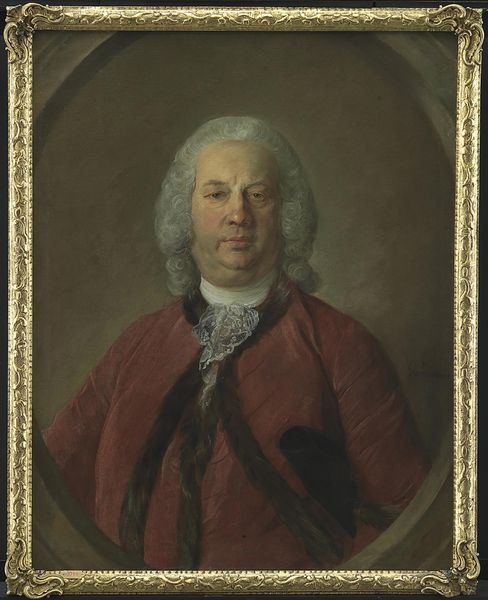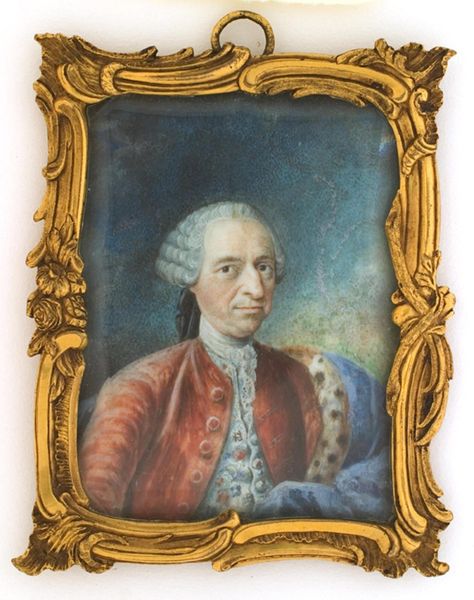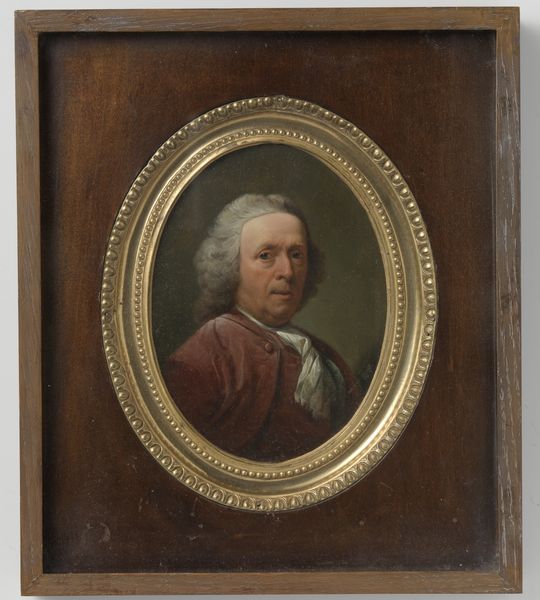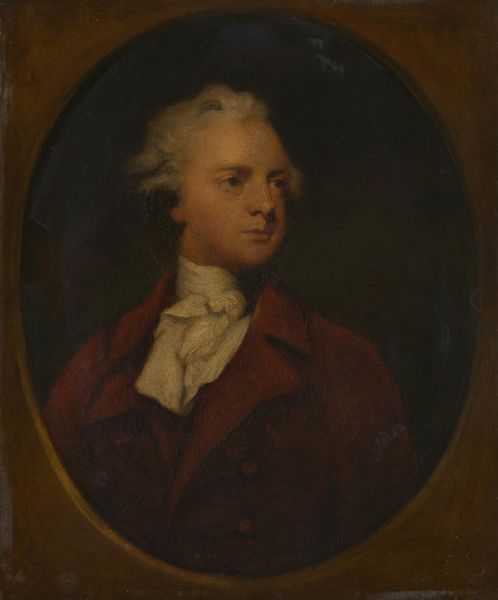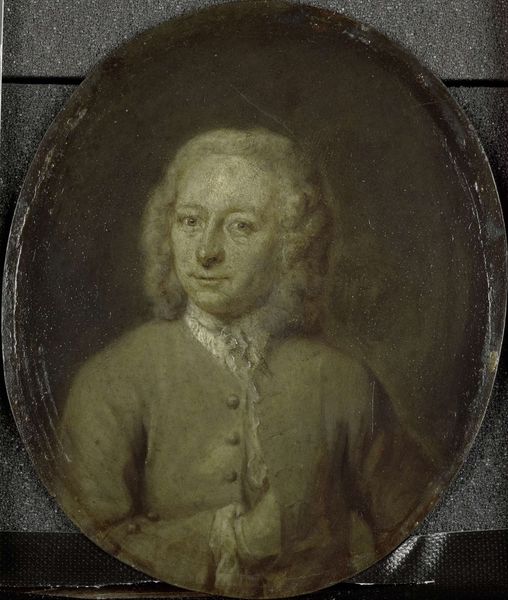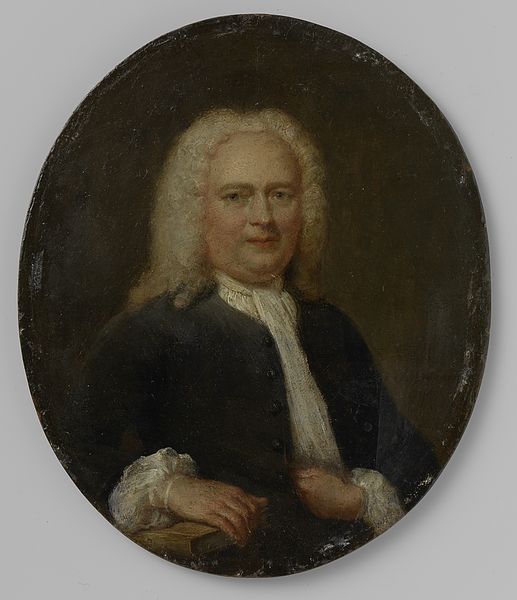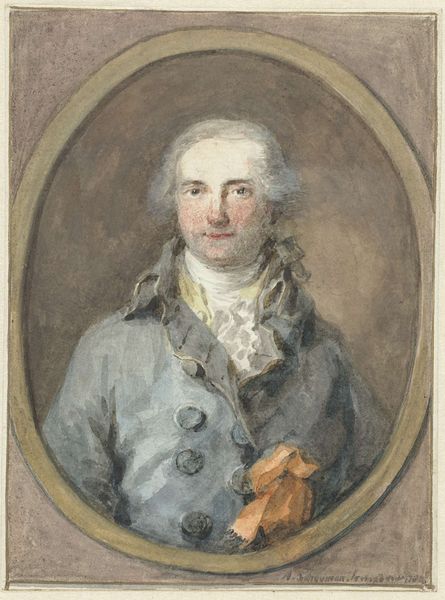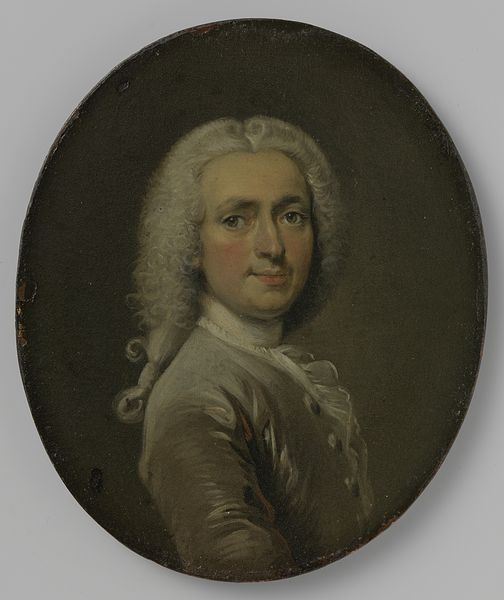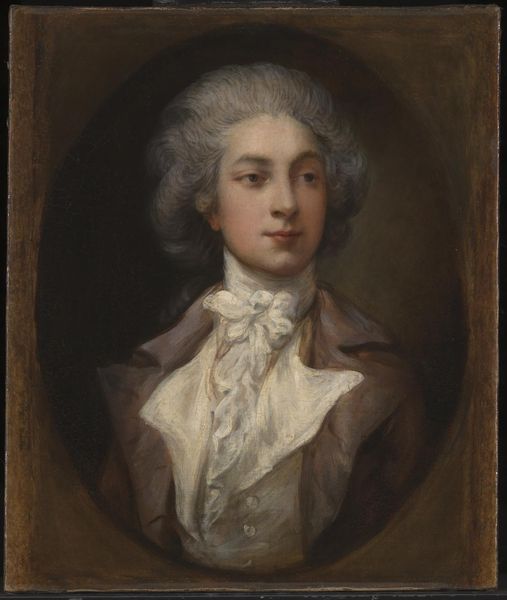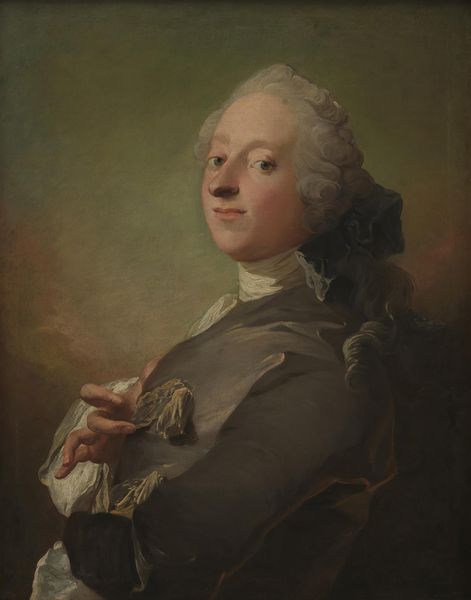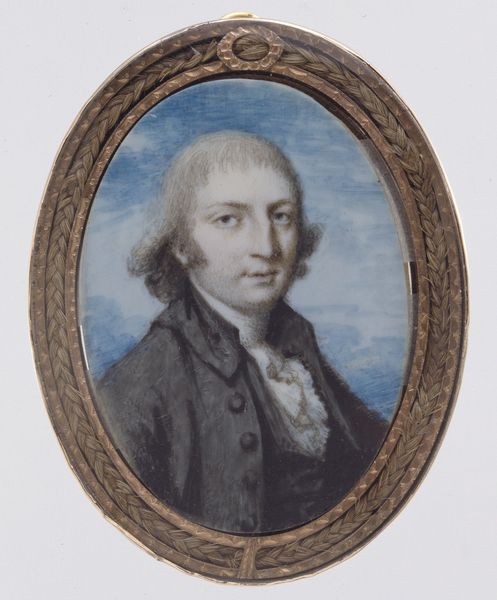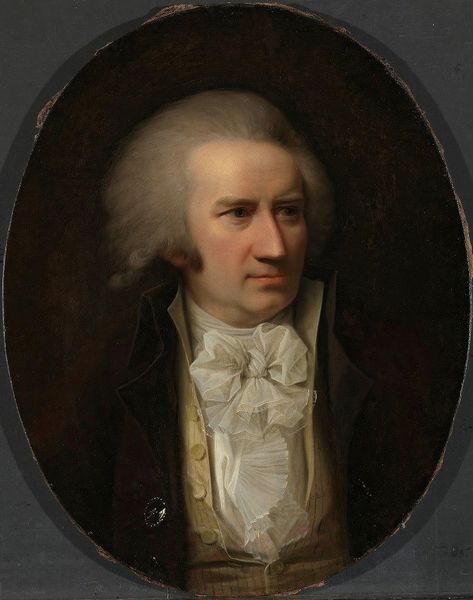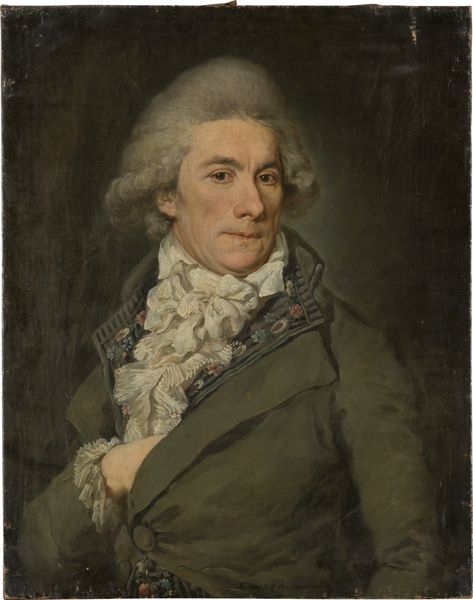
Dimensions: 32 11/16 x 25 3/16 in. (83.03 x 63.98 cm) (canvas)
Copyright: Public Domain
Editor: Here we have Jean Laurent Mosnier’s Self-Portrait, created in 1786 using oil paints. The artist's gaze is direct, and I’m immediately struck by how confident and maybe even a bit aloof he seems. How do you interpret this work, particularly considering the context of 18th-century France? Curator: It's easy to read that confidence, but let's unpack it. Self-portraits in this period were powerful tools of self-fashioning, especially for artists navigating complex social hierarchies. Consider the French Revolution, brewing in the background. Mosnier, as a portraitist, was deeply embedded in the aristocratic circles. But was he simply reflecting the status quo, or subtly critiquing it? The controlled, almost theatrical pose raises questions about performance and identity. What does this cultivated image tell us about the artist's anxieties or aspirations? Editor: That's fascinating. I hadn't thought about it as a potential commentary on the social climate, more of a reflection of personal status. The lavishness of his clothing seemed like a pretty clear statement of success. Curator: Exactly! But remember, visual language is rarely straightforward. The Rococo style, with its emphasis on ornamentation and artifice, was also beginning to face challenges. Could Mosnier's choice of style also be a deliberate act, aligning him with certain values, or perhaps distancing him from others? The upcoming revolution was a cultural reset impacting every aspect of social life. How much do you think artists of the time felt compelled to choose sides or reinvent their art for a changing world? Editor: That definitely adds a new layer. So, is it fair to say a self-portrait is never just about the individual, but a statement within a much larger conversation about society, politics, and even art itself? Curator: Precisely. It’s a negotiation of identity within a specific historical and cultural frame. By looking at the choices Mosnier made in depicting himself, we can start to understand the complex web of power, privilege, and perhaps even vulnerability that defined his world. Editor: I’ll never look at another self-portrait the same way! Curator: That’s the beauty of engaging with art history. It is a continuous conversation.
Comments
minneapolisinstituteofart almost 2 years ago
⋮
Jean-Laurent Mosnier was painter to the queen of France, Marie-Antoinette, and was known for his detailed, highly polished portraits. Here, however, the treatment is less finished, especially in the background, because this is a sketch made for his own use. In 1787, during the approval process for his acceptance into the French Royal Academy, he exhibited a self-portrait showing him seated at the easel with two young women admiring his work. Mia’s painting was his preparatory sketch. The rounded object at the right is the artist’s palette, which held his paints as he worked. Mosnier’s close ties to the royal family caused him to flee shortly after the outbreak of the French Revolution (1787–99). He spent six years in London, four in Hamburg, Germany, and the last eight years of his life in St. Petersburg, Russia, where this painting remained throughout the 1800s.
Join the conversation
Join millions of artists and users on Artera today and experience the ultimate creative platform.
